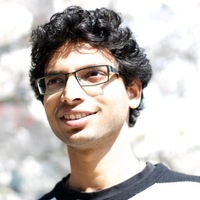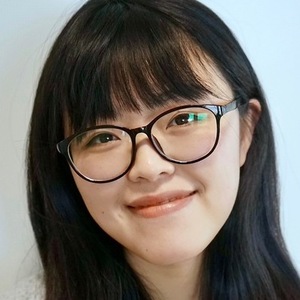
The optical flow of humans is well known to be useful for the analysis of human action. Recent optical flow methods focus on training deep networks to approach the problem. However, the training data used by them does not cover the domain of human motion. Therefore, we develop a dataset of multi-human optical flow and train optical flow networks on this dataset. We use a 3D model of the human body and motion capture data to synthesize realistic flow fields in both single-and multi-person images. We then train optical flow networks to estimate human flow fields from pairs of images. We demonstrate that our trained networks are more accurate than a wide range of top methods on held-out test data and that they can generalize well to real image sequences. The code, trained models and the dataset are available for research.
| Author(s): | Anurag Ranjan and David T Hoffmann and Dimitrios Tzionas and Siyu Tang and Javier Romero and Michael J Black |
| Journal: | International Journal of Computer Vision (IJCV) |
| Volume: | 128 |
| Number (issue): | 4 |
| Pages: | 873--890 |
| Year: | 2020 |
| Month: | April |
| Project(s): | |
| Bibtex Type: | Article (article) |
| DOI: | 10.1007/s11263-019-01279-w |
| State: | Published |
| URL: | http://humanflow.is.tue.mpg.de |
| Electronic Archiving: | grant_archive |
| Links: | |
| Attachments: | |
BibTex
@article{Ranjan:IJCV:2020,
title = {Learning Multi-Human Optical Flow},
journal = {International Journal of Computer Vision (IJCV)},
abstract = {The optical flow of humans is well known to be useful for the analysis of human action. Recent optical flow methods focus on training deep networks to approach the problem. However, the training data used by them does not cover the domain of human motion. Therefore, we develop a dataset of multi-human optical flow and train optical flow networks on this dataset. We use a 3D model of the human body and motion capture data to synthesize realistic flow fields in both single-and multi-person images. We then train optical flow networks to estimate human flow fields from pairs of images. We demonstrate that our trained networks are more accurate than a wide range of top methods on held-out test data and that they can generalize well to real image sequences. The code, trained models and the dataset are available for research.},
volume = {128},
number = {4},
pages = {873--890},
month = apr,
year = {2020},
slug = {multihumanflow},
author = {Ranjan, Anurag and Hoffmann, David T and Tzionas, Dimitrios and Tang, Siyu and Romero, Javier and Black, Michael J},
url = {http://humanflow.is.tue.mpg.de },
month_numeric = {4}
}





